Metavault.Trade is a new type of Decentralized Exchange

Metavault.Trade is an exchange platform that provides decentralized crypto exchange services designed with various crypto features. Metavault.Trade provides spot & perpetual exchange services that allow users to trade with up to 30x leverage and directly from their personal wallet.
Metavault.Trade is an innovative decentralized exchange platform as it provides spot & perpetual exchange services where users can trade safely and easily without going through an account, but simply by connecting their wallet and they will be able to trade. So it is a decentralized crypto exchange platform with leverage and convenience for users.
Metavault.Trade is a new type of Decentralized Exchange, designed to provide a wide range of trading features and very deep liquidity on many large cap crypto assets.
Traders can use it in two ways:
Spot trading with swap and limit orders.
Trade Perpetual Futures with up to 30x leverage on short and long positions.
Metavault.Trade aims to be the go-to solution for traders who want to stay in control of their funds at all times without sharing their personal data. Its innovative design provides many advantages over other existing DEXs:
Very low transaction fees.
No price impact, even for large order sizes.
Protection against liquidation events: sudden price changes that often occur in a single exchange (“scam wicks”) are smoothed by the design of a pricing mechanism that relies on Chainlink price feeds. All-in-one platform: Spot and Leverage trading.
Buy and sell
Metavault.Trade is a state-of-the-art Decentralized Exchange platform that does not require registration. To start trading in Metavault. Trade all you need is a Web3 wallet
To open a position, click on the “Trade” button in the header.
You will be taken to the trading panel. Click Zone 1 to select the currency you want to trade.
The MVLP consists of an index of assets used on the platform for swap and leverage trading. The user can score MVLP by adding any index asset to the liquidity pool (LP) while the MVLP is burned whenever the user removes any index asset from the LP.
MVLP holders get rewards in the form of MATIC and esMVX tokens.
The MVLP token is designed to supply the liquidity needed for leveraged trading. Thus, MVLP holders are suppliers of liquidity and they make a profit when leverage traders make losing trades. Instead, they lose money when the leverage trader makes a profitable trade. Previous PnL data and other statistics can be viewed at https://stats.metavault.trade/.
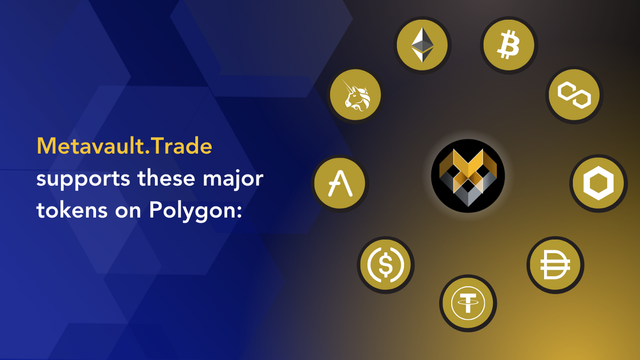
Problem
Most of today’s crypto users trade through centralized exchange platforms. Through this exchange platform, users will be able to trade crypto easily and securely. But the problem is that usually centralized exchange platforms use KYC for their trading which is problematic for some as it is related to their identity and privacy. Whereas users should be facilitated with a crypto trading platform that will make it easier for them to trade and not ask for their identity so that users will be able to trade freely without worrying about their privacy.
The solution
And in response to this issue, Metavault.Trade was launched as a decentralized exchange platform that would not question the identity of its users. This service is provided by Metavault.Trade is a decentralized & perpetual exchange, which will allow users to trade quickly and securely with leverage through their personal wallets. Since it only requires a connection to the user’s digital wallet, it means that Metavault.Trade does not require the creation of an account for the user. Users will be able to trade their favorite pairs freely without worrying about their privacy.
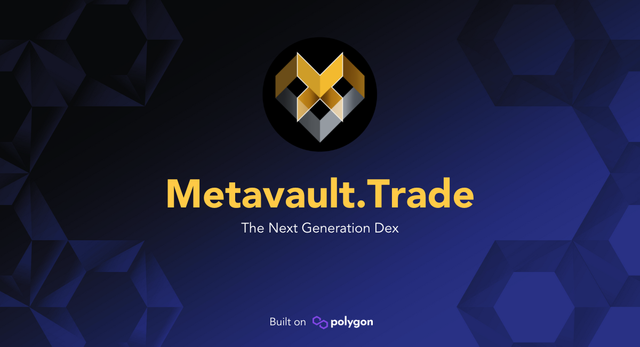
Metavault Exchange Features
Low Fees — Very low transaction fees.
No price influence, even for large order sizes.
Simple Swap — Open positions via a simple swap interface. Easily swap from any supported asset to your preferred position.
Reduced Liquidation Risk — Protection against liquidation events: sudden price changes that often occur in a single exchange (“scam wicks”) are smoothed out by the design of the price mechanism.
Complete platform: spot trading and leverage.
Multi-asset pools — The key innovation at the heart of Metavault.Trade is multi-asset pools. This feature allows the platform to share liquidity across all the assets it supports.

- Printing and Redeem
MVLP can be printed and redeemed by going to the “Buy” page from the header and clicking the “+ LIQ.”, “- LIQ” buttons in the MVLP box.
This will take you to the following screen where you will see a recap of all the MVLP characteristics:
Price.
Wallet ownership.
April
Total supply
In box 1 you can choose to print (“+ LIQ” button) or redeem (“- LIQ”) MVLP. You can select an index asset to spend or exchange using button 2 or one of the buttons in zone 3.
After selecting the asset, enter the amount to see the required cost in zone
Prices for printing and redemption are calculated based on the total value of assets in the index including gains and losses from open/supply MVLP positions.
Being able to provision/redeem the most/less sought after assets by the protocol will allow you to lower your costs.
Please note that minted MVLPs start earning rewards immediately and there is a 15 minute wait time after printing before you can redeem MVLP tokens.
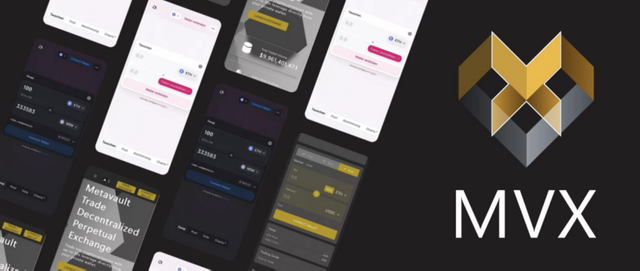
MATIC rewards from platform fees
This is the simplest and most understandable form of reward: MVX stakers will get 30% of the fees collected from all platforms in the form of MATIC.
In the case of blockchains other than the Polygon network, rewards are paid in native tokens of the blockchain, e.g. NEAR in the case of Near Protocol.
Metavault.Trade generates revenue by charging traders a small fee when they use the platform for the following:
Swap — fees vary according to the level of assets exchanged in the pool.
Opening and closing trades — costs 0.1% of position size.
Borrowing to increase trading or short assets — 0.01% fee * (assets borrowed) / (total assets in the pool), deducted at the beginning of each hour.
Another situation that generates fees for the platform is when
Traders with leveraged positions are being liquidated — 10% fee of positions.
Liquidity providers score or redeem MVLP — this is called a “rebalancing fee”, it depends on the state of the pool.
The chart below summarizes platform costs and how they flow back to MVX and MVLP stakers after conversion to MATIC.
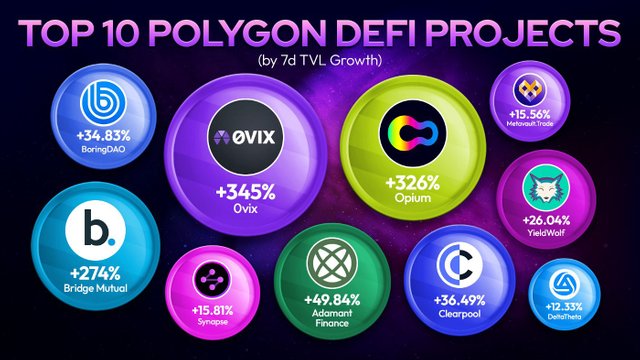
Team
Metavault.Trade is built by professionals and experts in their field who have years of experience in blockchain technology and understand the crypto market. The team is collaborating together on developing a decentralized exchange that will be used by many people globally easily and securely. With this collaboration, it is hoped that users can get the best service, where they can transact safely, quickly, and at lower costs through their devices.
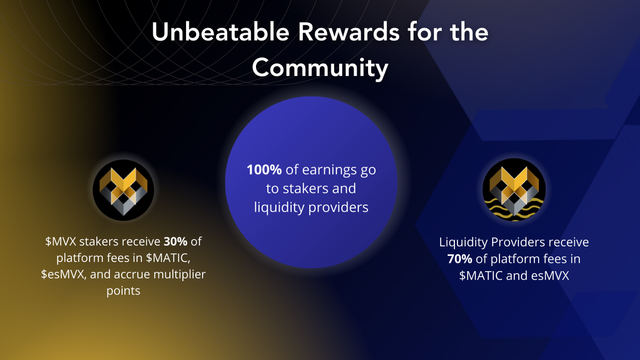
Distribution Level
Distribution rates change every month.
June 2022: 50,000 esMVX for MVLP providers & 50,000 esMVX for MVX stakeholders
July 2022: 60,000 esMVX for MVLP providers & 60,000 esMVX for MVX stakeholders
August 2022: 50,000 esMVX for MVLP providers & 50,000 esVMX for MVX stakeholders
September 2022: 50,000 esMVX for MVLP providers & 50,000 esVMX for MVX Staker
Detailed Reward Mechanism
MVX holders are strongly encouraged to stake their tokens on the platform as it provides them with three different types of rewards. They get:
- Part of the platform fee — paid in MATIC.
- New token: esMVX, generates its own rewards.
- Multiplier Points (MP) is another way to increase your MATIC earnings even more.
Let’s examine each of these gifts and how they are added in detail.
MATIC rewards from platform fees
This is the simplest and most understandable form of reward: MVX stoker will get 30% of the fees collected from all platforms in the form of MATIC.
In the case of blockchains other than the Polygon network, rewards are paid in native tokens of the blockchain, e.g. NEAR in the case of Near Protocol.
Metavault.Trade generates revenue by charging traders a small fee when they use the platform for the following:
- Swap — fees vary according to the level of assets exchanged in the pool.
- Opening and closing trades — costs 0.1% of position size.
- Borrowing to increase trading or short assets — 0.01% fee * (assets borrowed) / (total assets in the pool), deducted at the beginning of each hour.
Another situation that generates fees for the platform is when:
- Traders with leveraged positions are being liquidated — 10% fee of positions.
- Liquidity providers score or redeem MVLP — this is called a “rebalancing fee”, it depends on the state of the pool.
The chart below summarizes the platform costs and how they flow back to the MVX and MVLP stokers after being converted to MATIC.
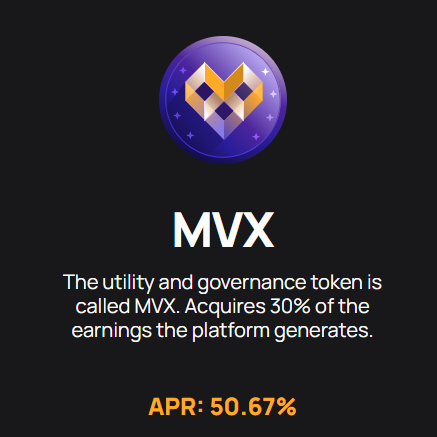
Conclusion
Metavault.Trade is one of the best projects I’ve seen so far. This project precedes the others. Since everything in this project is very clear, it can be said that the future of this project is very bright. Hopefully investors will benefit when investing in the project. Since this project is going according to plan so far, I think this project will be much better. Because yes, but most of these big investors have invested in the project. I think the future of this project is bright.
Link
Social media
Website: https://metavault.trade
Telegram: https://t.me/MetavaultTrade
Twitter: https://twitter.com/MetavaultTRADE
Media: https://medium.com/@metavault
Discord: https://discord.gg/metavault
by :
Torrent Shino